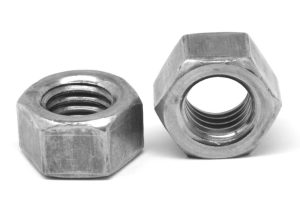Ensuring the highest levels of safety in aviation is paramount. Among various standards and protocols, the NAS509 standard plays a pivotal role. This document elaborates on its significance, detailing its impact on operational safety, cost-effectiveness, and efficiency within the aviation industry.
Understanding NAS509
The NAS509 standard specifies requirements for aerospace nuts, focusing on precision, durability, and resistance to environmental conditions. This ensures components can withstand extreme pressures and temperatures encountered during flight.
Key Specifications and Benefits
- Material Quality: NAS509 mandates the use of high-grade materials, such as corrosion-resistant steel and titanium. These materials offer unparalleled strength-to-weight ratios, essential for aerospace applications where every gram matters. For instance, a titanium NAS509 nut can endure temperatures up to 600°F without losing its integrity.
- Dimensions and Tolerances: Precision is critical in aviation. NAS509 nuts adhere to strict dimensional tolerances, ensuring a perfect fit and eliminating the risk of component failure due to improper installation. Typical tolerances are within ±0.0005 inches, significantly reducing the possibility of loosening under vibration.
- Cost-Effectiveness: While the upfront cost of NAS509 compliant nuts may be higher compared to standard hardware (with prices ranging from $5 to $15 per unit, depending on size and material), the long-term savings in maintenance and reduced risk of failure justify the investment. Aircraft equipped with NAS509 compliant components experience fewer mechanical issues, directly translating to lower maintenance fees and extended service intervals.

Impact on Safety and Efficiency
- Enhanced Safety: By using NAS509 compliant components, the risk of catastrophic failures is significantly reduced. This standard ensures that every nut and bolt can withstand the forces and conditions of flight, from takeoff to landing, enhancing overall aircraft reliability.
- Improved Efficiency: Aircraft downtime for maintenance significantly affects operational efficiency. With NAS509 components, aircraft spend less time grounded for repairs and more time in the air. This efficiency boost not only improves profitability for airlines but also enhances the overall travel experience for passengers.
- Lifespan and Durability: Components meeting the NAS509 standard typically have a lifespan exceeding 20 years, subject to proper maintenance. This durability is crucial for reducing the environmental impact of manufacturing and disposing of aerospace components, aligning with sustainability goals in the aviation industry.
Conclusion
The NAS509 standard is not just a set of guidelines; it's a cornerstone of aviation safety, ensuring every flight is as safe and efficient as possible. By specifying the use of high-quality materials, enforcing strict manufacturing tolerances, and setting high-performance benchmarks, NAS509 contributes significantly to the reliability and cost-effectiveness of aircraft operations. Its role in the aviation industry underscores the critical importance of maintaining high standards for all components, from the smallest nut to the largest airframe sections.